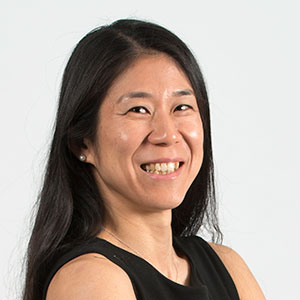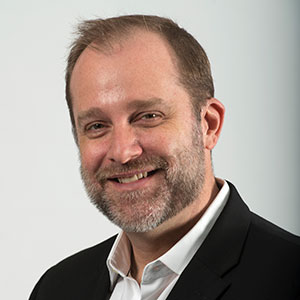 Molecular biologist and research fellow at UniSA’s Mawson Lakes Campus, Dr Miko Yamada is working on a small needle device that can collect skin samples much more easily than the traditional biopsy.
Molecular biologist and research fellow at UniSA’s Mawson Lakes Campus, Dr Miko Yamada is working on a small needle device that can collect skin samples much more easily than the traditional biopsy.
“Instead of taking a big biopsy from the skin, involving anaesthetics and a suture, my supervisor, Professor Tarl Prow, came up with a device to avoid unnecessary incision on the face or sensitive areas,” Dr Yamada says.
 The microbiopsy device is a small needle that can take 100 to 200 cells to test for skin cancer and other diseases. The device avoids the need to take a 2cm to 3cm piece of tissue which has some resultant scarring.
The microbiopsy device is a small needle that can take 100 to 200 cells to test for skin cancer and other diseases. The device avoids the need to take a 2cm to 3cm piece of tissue which has some resultant scarring.
“The innovation comes from the idea of a diabetic prick. We can take small samples easily so it is great for children and also for taking multiple samples over time to monitor someone’s situation,” she says.
“The standard biopsy includes a significant procedure before looking at the histology and pathology to make a diagnosis. We are not competing with that – we just want to help make it easier. Skin cancer changes over time so this method means we can take multiple samples over a period of time, very easily.”
The device has already proved a possible game changer in underprivileged countries. Doctors from Jerusalem’s Hebrew University have taken 500 units to Africa to use in the field.
“There are a lot of parasitic diseases in Africa and tribes usually can’t reach hospitals,” Dr Yamada says. Researchers at Hebrew University undertook a study on these diseases in northern Ethiopia where they were able to test hundreds of children and adults with the device.
“Researchers used the device to test people for a disease that was causing a lot of problems including ulcers in the skin, mouth and nose and later it presented with fever, low red blood cells and enlarged spleen and liver.
“They were able to take hundreds of samples quickly and easily, then take them back to the lab to find out who tested as positive. It blows my mind how useful it is.”
With skin cancer a more prevalent problem in Australia, doctors can spend up to three to four hours checking a patient’s skin (including moles and possible skin cancers) so Dr Yamada is working on developing cancer biomarkers so the device can take samples and evaluate (and reveal) the results instantly.
“Instead of doing all the skin mapping, you can just click, click, click throughout the body,” she says.
Growing up, Dr Yamada always thought she would be a veterinarian but during high school found an unexpected interest in biology.
“After that I decided I wanted to be in the lab or working with the human body,” she says.
Dr Yamada came to Australia from Japan on a university study exchange program that would help her sharpen her English.
She completed a bachelor (honours) degree in biomedical science, followed by a PhD which looked at the impact of oxygen levels on a baby’s brain in the womb and during delivery. And as fate would have it, she met her husband, married and had children all during that important phase of her career.
With her PhD under her belt, Dr Yamada worked with Queensland University’s Prof Prow who assigned her a clinical trial where she was able to see the real-life, impact of science on people’s lives.
Inspired by basic science applied in reality, she knew this was the area she was meant to be in. With her supervisor’s US connections, a six-month Australian Government Fellowship followed at Harvard Medical School in Boston in 2016.
Researching molecular-based skin cancer during the fellowship, Dr Yamada continued to be inspired to see the applications of her research through her industry partners.
“It was eye-opening,” she says. “I’ve never been so career-focused in my life and at that point, it was something I really wanted to pursue.”
When she returned to Australia, Prof Prow told his team about an opportunity at UniSA with some of them moving into great positions including Dr Yamada’s three-year fellowship.
Dr Yamada is responsible for developing protocols and monitoring research on how well the needle device works and how it can be best used to diagnose patients.
“I want every GP to have one. They can quickly click it and after analysis, tell the patient if they have cancer or not.”
With clinical trials in the final stages, Dr Yamada is monitoring feedback. About 4000 of the devices have already been sold worldwide and it is patented in the US, Australia and Europe.
Dr Yamada is also working with dermatologists and cosmetic companies who can test the effects of their products, before and after, with a simple click.
She says she never thought she would be working on something so important with the potential for global impact.
“I sometimes look and wonder why I am here,” Dr Yamada says. “I really appreciate my boss and have a team of people who are just so passionate about what they do.
“Science is knowledge-based and it’s amazing what we can discover, but not many people know how to use that knowledge to benefit the world. You need lots of money and time. We have a team that can do this from start to finish.”
Dr Yamada says she hopes her team will have significant global impact with the device by the end of her fellowship in 2019.